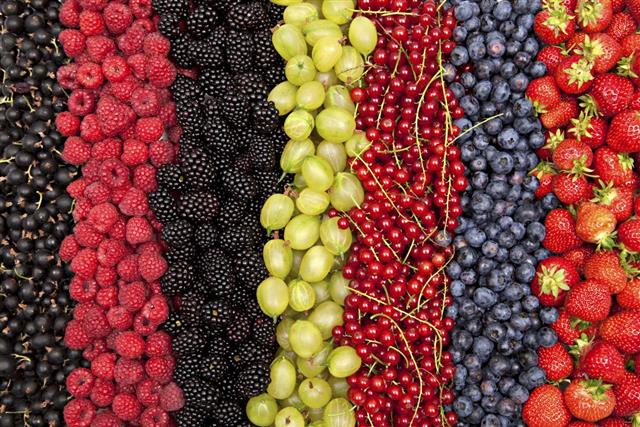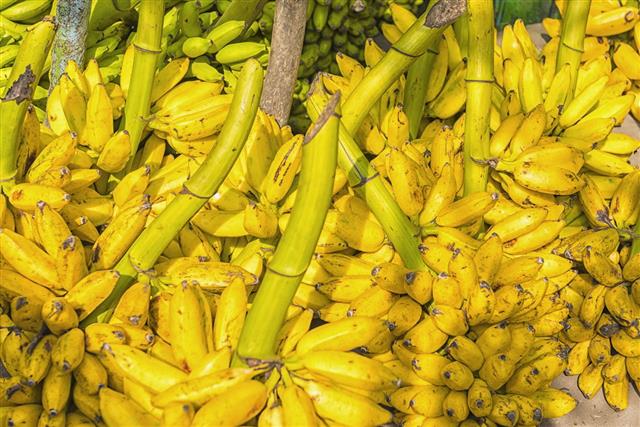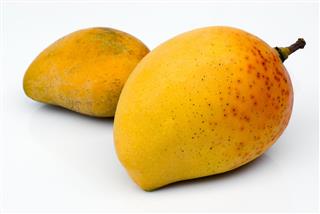
An excellent source of dietary fibers, vitamins, and nutrients, a variety of fruits are widely consumed for the many benefits they provide. Fruits can be broadly classified into three types – simple fruits, multiple fruits, and aggregate fruits. The sub categories for each, are given in the following article.
Did You Know?
The strawberry plant produces a fleshy “false fruit” aka pseudocarp from its flower, and what we think of as the seeds on the outside are the “true” fruits.
Considered to be an essential part of everyday diet, fruits provide a good amount of energy and nutrients needed for a healthy body. Fruits can be consumed raw, ripe, stewed, cooked, or even dried for their nutritional value and dietary fibers. The best part about consuming fresh fruits is that, they are fairly low in calories and fats, as they contain large amounts of water.
Fruits as we know them, are nothing but the sweet products of a plant that can be consumed as food. Botanically speaking, fruits are described as the seed-bearing structure in angiosperms (flowering plants) formed from the ovary after flowering. The flowering plant has to undergo the process of pollination after which the fertilized ovules form fleshy fruit tissues that make it fit for consumption.
Fruits are broadly classified into three main types
- Simple Fruits
- Dry Dehiscent
- Dry Indehiscent
- Fleshy
- Multiple Fruits
- Aggregate Fruits
Simple Fruits
Fruits that develop from a single ovary or are a part of the fused ovaries of a flower with a single pistil are known as simple fruits. Simple fruits are further subdivided as dry or fleshy fruits.
Dry Dehiscent
Follicle
It is formed from a single carpel and is a unilocular fruit. The ripened ovary splits just once to release the seeds.
Examples: Columbine, Milkweed
Capsule
It is composed of more than one carpel, which splits into sections corresponding to the number of carpels.
Examples: Brazil nut, Poppy
Silique
It consists of two fused carpels, which splits into two or four valves to release seeds. The valves remain connected at the top leaving a persistent partition.
Examples: Radish seed, Cardamine impatiens
Legumes
Developing from a single carpel, these fruits open along its seams on either side to release the seeds. They are generally referred to as pods.
Examples: Sweet pea, Beans, Peanut, Runner Bean
Dry Indehiscent
Achene
It is a dry, one-seeded fruit that is attached to the ovary wall with a stalk. They do not open at maturity and are monocarpellate.
Examples: Buttercup, Buckwheat, Cannabis
Samara
A single-seeded fruit which is contained within flattened wing like structure formed from papery fibrous tissue. It is a type of winged achene.
Examples: Elms, Hoptree, Bushwillows, Maples, Ashes
Caryopsis
It is a dry one-seeded fruit that is formed from a single carpel. The pericarp or the ovary wall is attached to/fused with the seed.
Examples: Wheat, Oats, Rice, Corn, Barley, Rye
Nut
It is a dry, hard fruit that does not split at maturity to release the seed. It develops from more than one carpel and has a tough woody wall.
Examples: Hazelnuts, Chestnuts, Acorns, Walnuts
Fleshy
Berries
It contains a fleshy mesocarp and endocarp with a thin exocarp. The ovary wall becomes completely fleshy when matured. Skin can be thin and tender, or thin and tough.
Examples: Kiwifruit, Grape, Cranberry, Blueberry, Tomatoes, Bananas
Hesperidiums
A modified berry which has a tough leathery rind that contain oils. The carpels are separated out by fibrous partitions.
Examples: Orange, Lemon, Lime, Grapefruit
Pepo
They are fleshy one-celled berry which have many seeds. It has a thick rind with a fleshy ovary wall.
Examples: Pumpkin, Gourd, Cucumber, Melon
Drupes
Fleshy mesocarp with single seed enclosed in a hard stony endocarp or pit. The pit needs to be broken to reveal the single seed.
Examples: Peach, Plum, Coconut
Pome
Composed of one or more carpels surrounded by accessory tissue. It has a leathery endocarp surrounded by fleshy accessory tissue.
Examples: Apple, Pear
Multiple Fruits
Fruits that are formed from a cluster of flowers that fuse to form a single mass are known as multiple fruits. The actual fruit consists of ripened ovaries of more than one flower which fuse during inflorescence. In simple words they are fruits of individual flowers that are closely packed to form a single unit/fruit.
Synconus
It is a collective fruit in which the ovaries are hidden within a hollow receptacle. The fleshy portion of the fruit is formed by the hollow inside-out (peduncle) inflorescence.
Examples: Fig, Dorstenia
Sorosis
It is a collective fruit formed from the pistils of many unisexual flowers of an inflorescence.
Examples: Mulberry, Osage orange, Breadfruit, Cherimoya, Jackfruit
Coenocarpium
It is a collective fruit formed from the ovaries, floral parts and receptacles of many flowers. It has a fleshy peduncle composed of the axis, the bract, and the perianth.
Example: Pineapple
Aggregate Fruits
Fruits that are formed from a single flower, having several distinct carpels on one receptacle are aggregate fruits. Simply put, it is a fruit formed as a result of the fusion of several ovaries of a single flower.
Examples: Strawberry, Blackberry, Raspberry, Boysenberry, Loganberry, Cloudberry, Wineberry
Fruits are nature’s way of treating us with sweet and sour foods, that have many health benefits and help keep our mind, body, and skin healthy. One should make it a point of including these abundantly found and healthy foods in their daily diet.



















